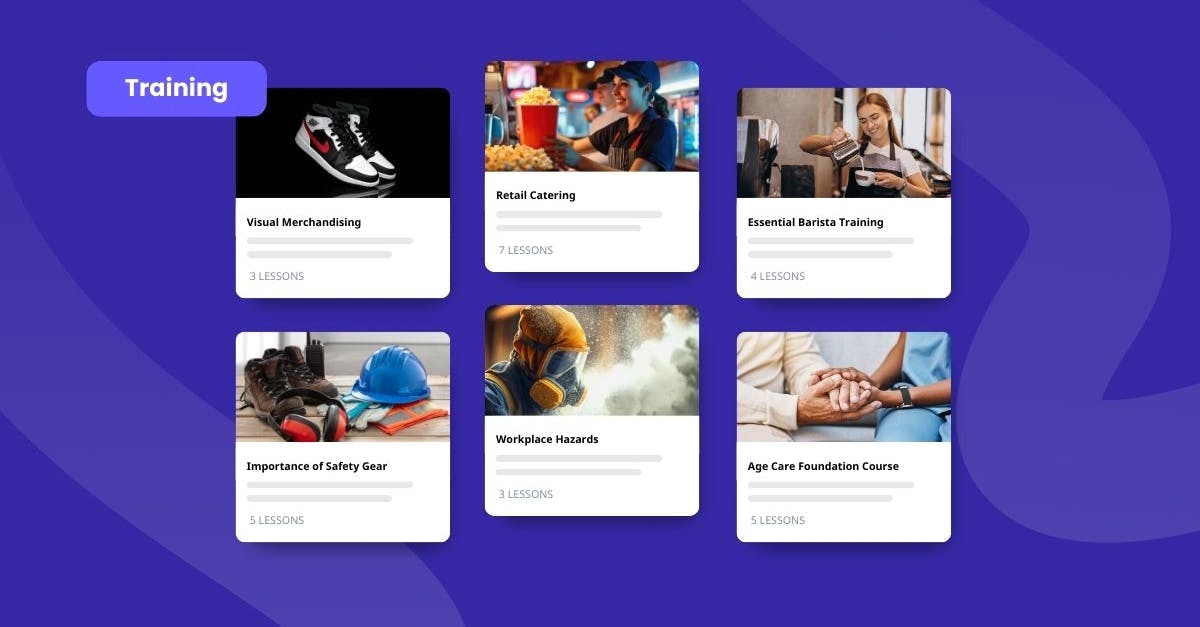What is Microlearning? A Guide
Published
November 25, 2024
Author
Share

When asked “What is microlearning?”, the short answer is it’s an effective learning technique that delivers content in small and focused segments. This makes it easier for learners to absorb and retain information.
It’s ideal for learners with busy schedules since they can engage with learning materials on the go. The content can be short videos, quizzes, or infographics, enhancing knowledge retention and application in real-life situations.
What are the Benefits of Microlearning?
Microlearning has gained popularity for its effective approach to training and education. By breaking down information into bite-sized pieces, it caters to the fast-paced lifestyles of busy workers.
If you're wondering what is microlearning, this method not only makes learning more accessible but also boosts retention and engagement. Here are some key microlearning benefits:
- Enhanced Retention
Short learning modules help learners remember information better since they focus on one key concept at a time.
- Flexibility
Learners can access materials whenever and wherever they want, fitting education into their busy lives with ease.
- Increased Engagement
Interactive and concise content captures attention, making learning more enjoyable and less overwhelming.
- Cost-Effective
Developing shorter, focused learning modules can save organizations time and money compared to traditional training methods.
- Personalized Learning Paths
Learners can choose microlearning courses that interest them or that they need to improve on, creating a more tailored learning experience.
- Quick Feedback
Many microlearning formats provide instant feedback, helping learners quickly identify areas for improvement and track their progress.
- Scalability
Organizations can easily expand microlearning initiatives to reach more learners without redesigning extensive training programs.
Examples of Microlearning
Microlearning comes in various forms, making it a flexible tool for education and training. By delivering content in short, focused bursts, it caters to different learning styles and preferences.
Here are some popular microlearning examples that illustrate its effectiveness:
- Video clips
Short, engaging videos that explain a concept or demonstrate a skill can capture attention and provide quick insights.
- Infographics
These visually appealing graphics summarize key information, making complex topics easier to understand at a glance.
- Quizzes and flashcards
Quick quizzes or flashcards help reinforce learning and allow learners to test their knowledge in a fun, interactive way.
- Podcasts
Brief audio segments that cover specific topics are perfect for on-the-go learning, allowing learners to absorb information while commuting or exercising.
- Interactive scenarios
Short simulations or scenarios allow learners to practice skills in a risk-free environment, promoting active engagement.
- Apps or software
Microlearning apps or microlearning software offer bite-sized lessons that can help learners stay on track and engage with content daily.
- Email Tips or Newsletters
Regularly scheduled emails with quick microlearning tips or insights keep learners informed and encourage ongoing learning without overwhelming them.
Effectively Implement Microlearning with SC Training
Now that you know what is microlearning, you’re one step closer to making engaging courses for your team. With SC Training (formerly EdApp), you can easily transform learning by delivering small, digestible chunks of information that make it feel less like a chore.
Choose from 80+ editable templates or start fresh through Create with AI to design exactly what you need in just a few minutes. Now, you won’t have to miss out on the chance to boost your team's learning and retention.
Break down complex topics and see the difference microlearning can make. Join SC Training today!
Author
Allyssa Laco
Allyssa Laco is a content specialist at SC Training, a mobile-first LMS platform known for providing top-notch training solutions. Her expertise lies in producing content for workplace learning and frontline training across various industries, including construction and hospitality. Outside of her professional life, Allyssa enjoys reading, baking, and binge-watching TV shows.
